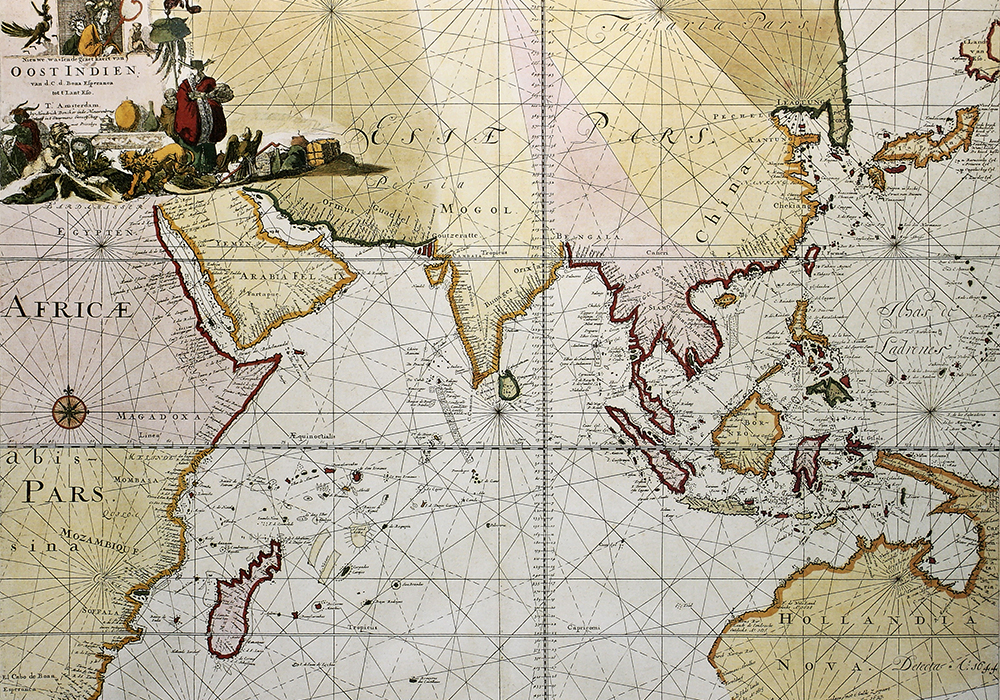Indian Ocean countries come together to boost prosperity and security
By Victoria George
You may not have heard of the IORA Leaders’ Summit, being held in Jakarta this week – but Dr Lauren Johnston, an expert in development and international economics from The University of Melbourne, says the summit could have big implications for Australia and the world.
The Indian Ocean Rim Initiative was founded in 1995 to encourage socioeconomic cooperation and peaceful endeavours, and was the outcome of a visit to India by Nelson Mandela. Twenty years ago, in March 1997, that initiative became the Indian Ocean Rim Association (IORA).
Today IORA is a dynamic organisation made up of 21 member states and will mark its anniversary with a first-ever IORA heads of state summit. The gathering in Jakarta, from March 5 to 7, brings together an unlikely array of countries, including Australia, India, Iran, Kenya, Madagascar, South Africa, Somalia and the United Arab Emirates.
We sat down with Dr Johnston, McKenzie Postdoctoral Fellow at the Melbourne Institute of Applied Economic and Social Research, the University of Melbourne, to find out more about the summit and IORA.
What links the 21 IORA countries together?
Well, the 21 countries are islands of, or countries bordering, the Indian Ocean. The dual tragedies of the 2004 Boxing Day Tsunami and the search for the disappearance of flight MH370 since 2014 have also brought about greater collaboration between IORA member countries, among others.
The Indian Ocean is an historic region of world trade, especially between the Middle East, South Asia and East Africa. The Indian Ocean region is home to Buddhists, Hindus, Muslims, and Judeo-Christian societies, and many countries home to mixed ethnicities and religions.

Why is it such an interesting alliance?
From an economics perspective, the region is interesting for a number of reasons. Firstly, demographics - in China for example the median age is 37, in the USA its 38 and 46 in Japan and Germany - whereas for most Indian Ocean Rim countries the median age remains below 30.
Until recently China has dominated the low-wage industrial sectors globally. However China’s own economic development and the ageing of its domestic population are now combining to put pressure on wages. This is opening up potential new industrial opportunities for low-wage economies elsewhere.
Coastal economies offer an important bridge supporting outward-facing industrialisation via ports and transportation linkages. In Africa, selective economies are key focal points of China’s outbound investment initiative, the Belt and Road initiative.
Kenya and Tanzania among them are members of IORA. A recent survey of private bankers by UK property firm Knight Frank Wealth identified Kenya, Mauritius and Tanzania as hot spots for increasing wealth management opportunities - all three are coastal members of IORA.
What are the potential implications of the IORA summit for the world?
The 20th anniversary summit, the first at head of state level, is expected to be a game-changer for regional cooperation. Under the theme ‘Strengthening Maritime Cooperation for a Peaceful, State and Prosperous Indian Ocean’, the gathering aims to forge revitalised and sustainable architecture for multi-dimensional engagement.
The summit is proposed to adopt an ‘IORA Concord’ and the ‘IORA Action Plan’, as well as the ‘IORA Declaration on Countering Violent Extremism leading to Terrorism’.
More than 80 per cent of the world’s seaborne oil trade passes through three key Indian Ocean passages – the Strait of Hormuz, the Strait of Malacca, and Ba el-Mandab. IORA countries will also discuss piracy and regional security issues.

India is the world’s largest democracy, and Indonesia the world’s most populous Muslim nation. The scale of the development potential today offers a fresh chance for inclusive and sustainable development. IORA members have established cooperation projects on enhancing blue economy cooperation for sustainable development.
IORA is also unique in that none of the world’s economic powers are full regional members. Importantly however, China, Egypt, France, Germany, Japan, the UK and the US are dialogue partners of IORA. Working together with those partners, IORA members have called for a new era of dynamism in the region.
What are the implications and opportunities for Australia?
In an era of political uncertainty internationally, and tensions between China and the United States, the first ever IORA summit offers Australia an important chance to deepen its cooperation with middle-power countries, fostering security and prosperity at home and abroad in the process.
IORA opens up a rare strategic and long-term window through which Australia should deepen its interests and international collaboration. Dr Lauren Johnston
Growing momentum within the IORA members’ region presents a unique opportunity for Australia to deepen ties with countries to its immediate west. Australia is the only OECD member of IORA, and alongside Singapore and the Seychelles, the only member country that enjoys high per capita incomes.
Many IORA members are, like Australia, also members of the Commonwealth, and use English as an official language. This could help enhance services sector-related opportunities, in the education of students from the region and in terms of inbound investment projects in mining, agriculture and the services sectors of IORA economies.
What does the future of IORA look like?
IORA may ultimately evolve to something reflecting APEC, opening up equivalent remarkable economic and political opportunities for Australia accordingly.
Australia will have a chance to help support and shape the development of the region. It is also a chance for Australia to deepen ties with ASEAN partner countries Indonesia, Malaysia, Singapore and Thailand, also members of IORA.
Read Dr Lauren Johnston's article on China, Australia and the African frontier in Pursuit.